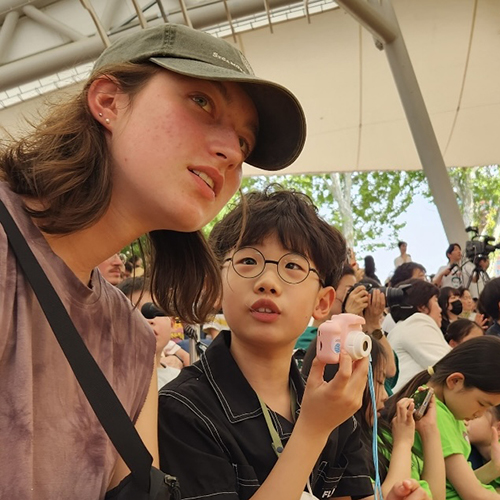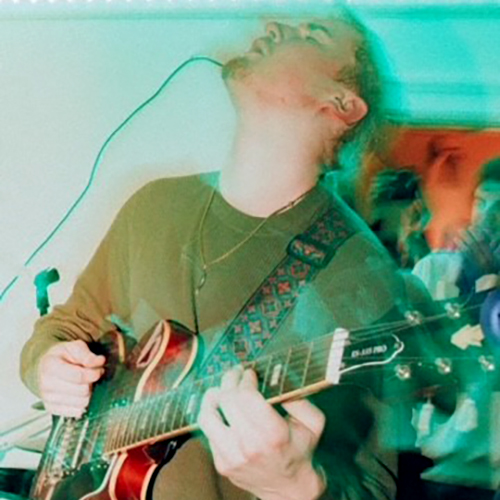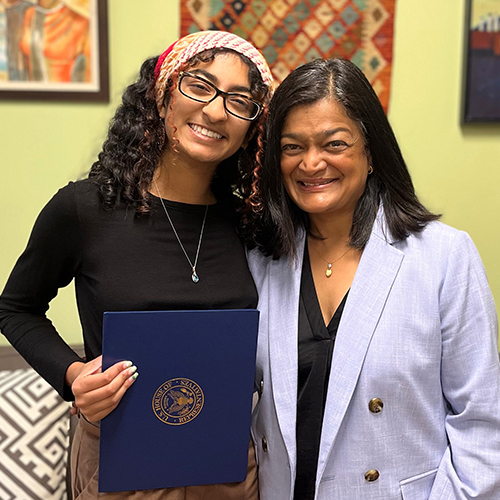Some of us have grown robust colonies of algae, quite by accident, in a neglected bird bath. But botany staff member Ellen Duffield spends her days growing various algae and fungi deliberately for use in undergraduate laboratory classes. And she loves what she does.
“Every time I look at algae cultures through a microscope I get excited,” Duffield says without a hint of sarcasm. “I can’t help it.”
It’s safe to say that Duffield has one of the more unusual staff jobs in the College of Arts and Sciences. But she’s not the only one who works behind the scenes, using specialized skills to make a difference in her department.
“The quality of our staff, and the specialized expertise they provide, is tremendous,” says David Hodge, dean of Arts and Sciences. “Often their work is unknown outside of their department. But they are an absolutely essential ingredient in the success of the College.”
Here four staff members, most of whom have held their jobs for more than two decades, provide a glimpse into their unusual work.
Managing an Algae Zoo
Visit Ellen Duffield’s office in Hitchcock Hall, and you’ll find yourself distracted by her collection of algae. Glass jars line the shelves, filled with Ventricaria—resembling luminous green bubbles—and Acrosorium, a tangle of thin red strands, as well as other plants.
“I think they’re really beautiful,” says Duffield, whose official title is Culture Curator for the Department of Botany. “But more than that, they are such an important part of the world we live in. Algae produce about half the oxygen and fix half the carbon in the world. And fungi are great recyclers—if a tree falls down, they get in there and turn it into soil.”
Duffield wants students to share her fascination with these small, simple organisms. That’s why she spends her days growing and maintaining Botany’s extensive collection of algae and fungi, which are used in undergraduate laboratory classes to illustrate their form, function, and development.
Caring for a collection of 200 algae and 200 fungi—used by about 2,000 students in 20 different classes each year—is no simple task. “It’s sort of like managing a zoo,” says Duffield. “Each organism has its own diet, light, temperature needs, and reproductive cycle. For classes, you have to have them at the right point so that students can observe the reproductive process. A lot of my job is scheduling.”
The specimens are stored in five growth chambers, each kept at a different temperature. Five smaller chambers serve as a backup in the event of a power failure. With some specimens dating back more than 40 years, such precautionary measures are essential.
Duffield’s job does have its glamorous moments, like days spent collecting horse dung in Snohomish County or afternoons spent collecting dead flies from windowsills in Johnson Hall. No wonder she’s stayed for more than 20 years.
Turns out, dead flies and horse dung are terrific media for growing certain fungi. When horses eat grass in the field, they also consume spores of Pilobolus, a fungus. The spores remain in the dung and soon sprout if the dung is kept in a moist plastic container.
“Within a week, you can start to see the fungi growing—clear stalks with black tips that shoot out more spores,” says Duffield. “To use them in class, it’s important to get the dung fresh every time.”
How do students respond to these samples? “They always say ‘ick’ at first,” admits Duffield. “But before long the ‘ick’ factor gets taken over by interest.” And that, she says, is what makes her work worthwhile.
“Our algae and fungi samples allow students to see things people don’t normally see,” says Duffield. “It really gives them a sense of the biodiversity in nature. I find that most people, given the opportunity, really want to know what is out there in this world.”
Coordinating a Big Blowout Production—Every Day
John Davis also provides materials that allow students to observe natural phemonena. But instead of algae and fungi, he uses air tracks, bicycle wheels, spring scales, tuning forks, magnets, prisms, and other assorted objects.
Davis is a lecture demonstrator for the Department of Physics. He coordinates, installs, and dismantles apparatus used in physics classes to demonstrate everything from uniform velocity to nuclear magnetic resonance. And he maintains the department’s extensive—and somewhat unwieldy—collection of nearly 1,000 demonstrations.
“Some people refer to my storage area as the ‘toy room,’” says Davis. “But everything in here is a teaching tool to demonstrate nature in action.”
Consider Davis’s personal favorite, the Toepler-Holtz electrostatic generator. It’s the oldest piece of equipment in the collection—dating back to 1892—but it still grabs students’ attention as it creates a high level of charge through static electricity. “It can jump a spark seven or eight inches on a dry day,” says Davis. “When it goes off, students typically jump in their seats. Students love it so much. You drag out this ancient piece of equipment and it charges up the room—in more than one way.”
Physics faculty typically use four or five such demonstrations in class on any given day. Davis and assistant Gavin Fulmer are responsible for setting up all the equipment—sometimes for several faculty in several lecture halls simultaneously—in the ten minutes between classes.
“It’s like being a stage manager for a big blowout production,” Davis jokes. “Everything has to work perfectly, and on time. At times it can be a high stress job. I guess I must be an adrenaline junky in my own way.”
Although suited to the job, Davis entered the field of lecture demonstrations through the back door. He was pursuing a master’s degree in physics at Kansas State University when his department asked him to fill in for a lecture demonstrator who had left on short notice. “I figured it could provide income while I took classes,” he recalls.
Four years later, a National Science Foundation course about lecture demonstrations enabled Davis to see “how powerful lecture demonstrations can be as a teaching tool,” he says. “That’s when my job became a career.” He continued working at Kansas State for another seven years, then switched to the UW in 1979.
The teaching aspect of the job still motivates Davis, who once considered becoming a physics teacher. “I see my job as a way to teach behind the scenes,” he says. “It’s the best of all worlds, really, since I get to help with a lot of positive teaching, but I don’t have to grade papers.
“When students can see a phenomenon through a demonstration, it seems to etch a sector in their memory banks,” says Davis. “I’ve met people who can describe phenomena they had seen 30 years earlier in a demonstration. The demonstrations make a long-term impact.”
Forget the BMW, Try the Bösendorfer
Steve Brady maintains a UW collection of a different sort. As head piano technician for the School of Music, he keeps the school’s 130 keyboard instruments—pianos, harpsichords, and fortepianos—in working order.
Brady shares the job with Susan Cady, each working half time. They are constantly kept busy with everything from simple piano tunings to rebuilding pianos that have deteriorated through heavy use. His office has the appearance of a piano operating room, with a half-assembled keyboard on a table, strings on the counter, and a gutted piano frame hovering nearby.
“Pianos are extremely complex instruments,” says Brady. “They have about 12,000 parts. A BMW, in comparison, has about 4,000 parts. To complicate things, pianos are made of materials—wood, felt, leather—that react to humidity, so they are always in a state of flux. People think of them as inanimate objects, like rocks or tables, but they do wear out.”
Especially in the School of Music. The school’s classroom and studio pianos are frequently in use, and the practice room pianos are played up to 12 hours a day. That’s a punishing schedule for such a delicate instrument.
“With that kind of use, the pianos should be serviced at least once a month,” says Brady, “but given all the other demands on our time, it’s more like twice a year.”
The classroom and studio pianos fare a bit better, with quarterly tunings and maintenance of broken strings, sticky keys, and other minor problems as time permits. “It’s pretty much a squeaky wheel operation,” sighs Brady. “We’re really understaffed.”
Although Brady does tune pianos, that’s just one part of his job. He also makes adjustments to regulate each piano’s touch and tone quality. “On each key, there are a dozen or so adjustments to regulate the touch, including height of the key and the distance of the hammer to the strings,” says Brady. “Then there’s voicing, which alters the loudness and brightness or mellowness of the sound.”
Voicing is particularly important for the School’s concert pianos in Brechemin Auditorium and Meany Hall, used by faculty and visiting artists. “Pianists definitely have different tastes,” says Brady, who has prepared the Meany concert grands for many of the world’s top pianists, from Peter Serkin to Murray Perahia to Andras Schiff, adjusting the tone and touch as needed.
Often Brady is able to determine a pianist’s personal taste before he or she arrives. “If it’s an artist I haven’t worked with, I’ll listen to a recording to get an idea of their sound,” he says. “And I’ll look at their repertoire and see what they are playing to get an idea if there’s anything I can do to help with the program.”
It helps that Brady is an “avid amateur” pianist himself—married to a professional pianist—and served as editor of the national publication in his field, Piano Technician’s Journal, for six years. “I absorbed a lot of technical knowledge from reading and rereading articles as editor of that journal,” says Brady. “It’s made me a better piano technician.”
That confidence comes in handy when dealing with big-name performers. Even so, Brady admits to nervousness when a major artist comes to campus—even after nearly 24 years on the job. He recalls one occasion when pianist Peter Serkin checked the tuning and regulation of the piano before a performance, testing each key with painstaking care as Brady and Matt Krashan, director of Meany’s UW World Series, looked on. “Matt turned to me and said ‘I wouldn’t have your job for anything,’” recalls Brady with a laugh. “It can be stressful,” he admits, “but it’s worth it.”
Engineering—with Gabardine and Silk
For Laurie Kurutz, lead costumer in the School of Drama, stress comes in the form of deadlines. But after years of working in theater, she’s used to the schedule.
Kurutz is part of a three-person staff that creates costumes for School of Drama productions. “All of our shows are designed by students—mostly graduate students, occasionally undergraduates,” she says. “We are the technicians who build the costumes that the students design. They are the architects, we are the engineers.”
Asked about the importance of costumes in a drama production, Kurutz explains, “Theater is a visual medium. The minute the actors step on stage, before they speak, the costume conveys who they are. That revealing of character has to do with design choices, fabric choices, color choices… down to the buttons. Because everything means something.”
Kurutz realized the importance of costumes early on, as a high school drama student. “In high school, you frequently do everything—sets, props, acting, costumes, publicity—but something about costuming clicked for me.” During college she volunteered in the costume shop at the Oregon Shakespeare Festival in Ashland; she was hired as permanent staff two days after graduating.
“It’s one of the largest costume shops in the nation,” she says. “The resident designer had exceedingly high production standards and she taught me. It was the old apprenticeship method. It was my graduate school.”
After 11 years in Ashland, Kurutz was ready for a change. She came to the UW in 1992. She’s built hundreds of costumes since arriving, all now part of the School’s extensive costume collection. The collection includes more than 3,000 feet of inventory hanging in six costume storerooms, plus 300 boxes of costume items.
Each costume represents a collaboration. “The designer brings sketches into the shop and meets with us,” explains Kurutz. “Then we do the Vulcan mind-meld, with the designer describing everything about each costume—how it should look, act, breathe, move.”
Kurutz’s role is to help realize the designer’s vision. “It’s challenging—in a good way,” says Kurutz. “There is often period research involved, so I can help create the vision the designer has in mind. I have to be an historian, an art historian, a psychologist who understands characters and how they can be revealed, and I have to synthesize all those things. Each production is different, which keeps things interesting.”
In addition to constructing costumes, Kurutz teaches several drama courses each year, including Tailoring for the Theatre and Pattern Drafting and Draping.
“I didn’t know when I took this job that I’d fall in love with the teaching aspect and the students,” says Kurutz. “The students’ energy and their discovery process is exciting. Sometimes they have a vision in their head, but they don’t think it can be done. I can show them a technique, and suddenly they realize that all things are possible. That’s a powerful thing.”
After all these years, does Kurutz ever tire of the deadlines, the novice designers, and the nagging details she faces daily in her job? Not a chance. Like the others with unusual jobs in the College—working with algae or piano strings or electrostatic generators—Kurutz is thrilled that she is able to pursue a lifelong passion through her work.
“I am so lucky to be able to do what I like to do, what tickles my mind,” she says. “It really does still excite me as much as it did 20 years ago.”
More Stories

Finding Family in Korea Through Language & Plants
Through her love of languages and plants — and some serendipity — UW junior Katie Ruesink connected with a Korean family while studying in Seoul.

Celebrating Contemporary Indigenous Music
Markus Teuton, a musician and citizen of Cherokee Nation, explores contemporary Indigenous music through his academic work and as host of “Indigenous Jazz,” a radio show.

Learning Hard Truths Through Internships
Sana Shetty, interested in human rights law, has a more nuanced understanding of potential careers thanks to internships.